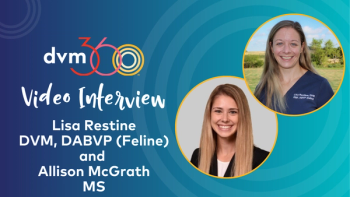
- December 2017
- Volume 1
- Issue 5
The Connected Practice
Savvy use of technology is a must for independent veterinary hospitals to not just survive but thrive. Take these steps to make sure your practice doesn’t become “unplugged.”
The past quarter-century has witnessed a great shift in veterinary practice ownership, with corporate hospitals now quite common throughout the country. Based on trends in other vertical health care markets such as dentistry, many expect that corporate practice ownership will “level out” at 25 to 30 percent.
Once acquired by a corporation, a veterinary practice benefits from a variety of shared services and aggregated purchasing power. I liken this not only to what has occurred in the dental profession but also to what I saw growing up in rural Illinois in the 1970s. Inefficient farms were forced to close or were sold to larger corporate entities because they could not keep up with the latest equipment and innovations and were unable to farm 24/7.
My message to independent veterinary practices is that this does not have to happen to you. Yes, there is more competition out there now and practices require greater business proficiency to succeed, but private practices have a powerful weapon at their disposal: technology. The astute use of technology can be your “great equalizer” when it comes to competing with corporate practices. I call this “getting connected,” and the good news is that all you need to succeed is a decent practice information management system (PIMS; a.k.a. practice software) and the internet.
RELATED:
- Engaging with Clients Through Technology
- Grow Your Practice Through Social Media
Being "Connected" Today
What does it mean to have a practice that is “connected” ? The short answer: It all depends on you and the needs of your unique practice. Ten years ago, being connected was much simpler. It was about using email and the internet, ordering online, maintaining electronic medical records and exploring the use of social media. Today, it involves so much more.
By networking and coordinating the delivery of medical care — “connecting” with clients — a practice expands patient care, improves customer service and delivers better business performance. In a nutshell, being connected is about improving the continuity of care that pets receive. Look at your family and friends. They all use their smartphones to stay connected to loved ones, to work, to their local and global communities, and even to their pets. Today’s pet owners want to relate to their veterinarian in the same way.
Technology helps practices become more efficient. It doesn’t matter if yours is a 15-doctor practice in an urban core or a one-doctor practice in rural Illinois — you can use technology as the great equalizer, and your one-doctor practice can operate at the same level of efficiency as much larger practices.
Connections You Need to Make Now
Here are the best ways to get your practice connected. This list is certainly not complete, but it is a good start.
Client-Facing Connectivity
Your practice’s website and app should allow clients to access their pet’s health records and contact your practice easily via phone, text and email. It should also allow you to send push notifications to your clients. (A push notification is a message that pops up on a mobile device. App publishers can send them at any time; users don’t have to be in the app or even using their device to receive push notifications.)
Choose a vendor and automate all postal reminders. It frightens me when I walk into a practice that is still generating reminders in house or, worse, writing them out by hand. Stop doing this, clean up your database and automate immediately.
Did you know that 90 percent of text messages are opened within three minutes of being received,1 and many clients want you to communicate with them via text? Select a vendor that enables you to send email and text reminders, and start collecting mobile phone numbers if you have not already done so. Most app and website platforms also provide email, postal and texting functionality.
Your practice needs to have a social media presence. Facebook, Twitter and LinkedIn are all important. Many companies provide social media and reputation management services, so pick one and get started.
Your clients want the ability to schedule an appointment with you 24/7. Make sure your PIMS allows for online appointment scheduling, or choose a third-party service to facilitate this effort.
Having an online pharmacy is critical for future growth, and I consider it mandatory. Your local manufacturer or sales representative is a good resource to help you choose the right online pharmacy for your practice.
Practice Management Tools
Many companies provide practice analytics and benchmarking in easy-to-read reports. Choose a company and work with it. Make sure your practice is following the American Animal Hospital Association/Veterinary Study Groups (AAHA/VSG) chart of accounts, field definitions and AAHA diagnostic codes, which can be found at
Partner with a pet health insurance company that allows for easy electronic processing of pet health claims at your practice or by your client. Your clients expect an experience similar to what occurs when they see their own physician. Work with a company that can automate the payment process and offer a direct payment to your practice’s bank account within a few days.
Being connected comes with a caveat: You need to rethink the way you perform your job. With connectivity comes the opportunity to change the way you deliver patient care and client service.
Are you among those who think mobile phones should be banned from the pockets of your support team? If so, consider that many doctors and support staff could benefit from accessing medical content online from their smartphones or iPads. Something as simple as having access to your in-house subject-matter experts via text messaging is beneficial from the standpoint of consistency of care and growing the knowledge of individual team members. Your clients are looking up information online, so why not let your team members enter an exam room armed with better resources to engage in constructive dialogue with your clients? We all know that “Dr. Google” is sometimes wrong.
Becoming connected could change the physical landscape of office personnel, enabling a practice to blend on-site and remote team members. It is already becoming easier to outsource certain job duties using cloud-based services. Consider ways that connectivity can change other business operations (e.g., connecting with clients by using off-site staff with remote capabilities).
Looking to the Future
Bob Dylan’s lyrics from 1964 still hold true today: The times, they are a-changin’. Connectivity is not only affecting veterinary medicine; it can be seen in human health care too. As people become increasingly connected to their physicians, veterinarians can expect more demands for connectivity from clients. Ten years ago, it was common to hear a veterinary client praise a practice with the words, “My own doctor doesn’t do that for me — my pet gets better care than I do.” The situation may flip on us, and we may be told, “My doctor offers telemedicine, and I can manage my health needs online. Why can’t I do that for my pet? ”
If it all sounds like too much for you, but you agree that connectivity is the best way to enable your practice to thrive, then consider hiring a practice management consultant.
Mr. Truman is the founder and owner of BLT Technology & Innovation Group, a companion animal business consulting company that focuses on marketing and sales strategies for new products and services. He is the current president of VetPartners (
Reference:
- 90% of text messages are read within 3 minutes. Tatango website. https://www.tatango.com/blog/90-of-text-messages-are-read-within-3-minutes/. Published April 23, 2012. Accessed October 1, 2017.
Articles in this issue
almost 8 years ago
Power-Packed Digital Marketing Strategiesalmost 8 years ago
Digital Marketing on a Shoestring Budgetalmost 8 years ago
On the Bright Side: Job Outlookalmost 8 years ago
Shut the Revolving Door - Part 1: Job Descriptions and Skills Gapsalmost 8 years ago
Extinguish the Anger: How to Manage Conflict Before It Escalatesalmost 8 years ago
How to Build the Perfect Resumealmost 8 years ago
Implementing a Bonus Programalmost 8 years ago
Links Between Animal Abuse and Domestic Violencealmost 8 years ago
Oh, the Places You Can Go in Animal Carealmost 8 years ago
Rung by RungNewsletter
From exam room tips to practice management insights, get trusted veterinary news delivered straight to your inbox—subscribe to dvm360.






